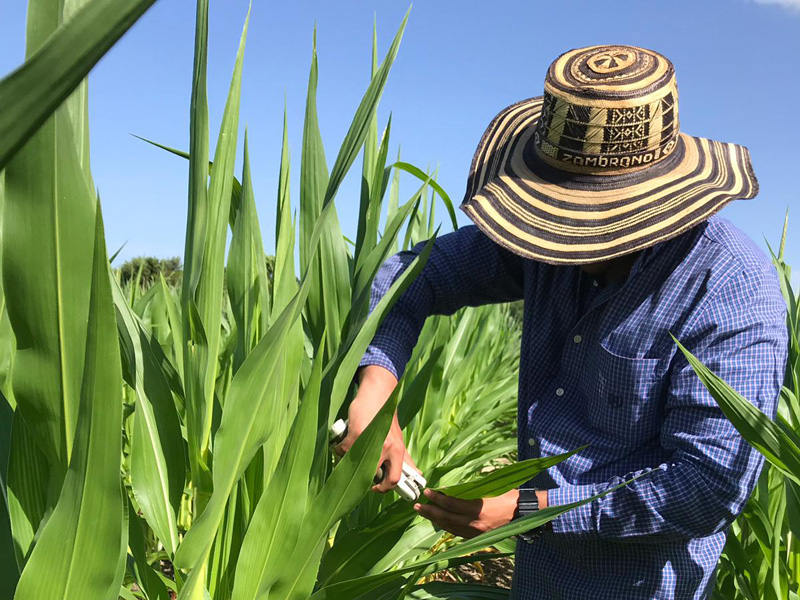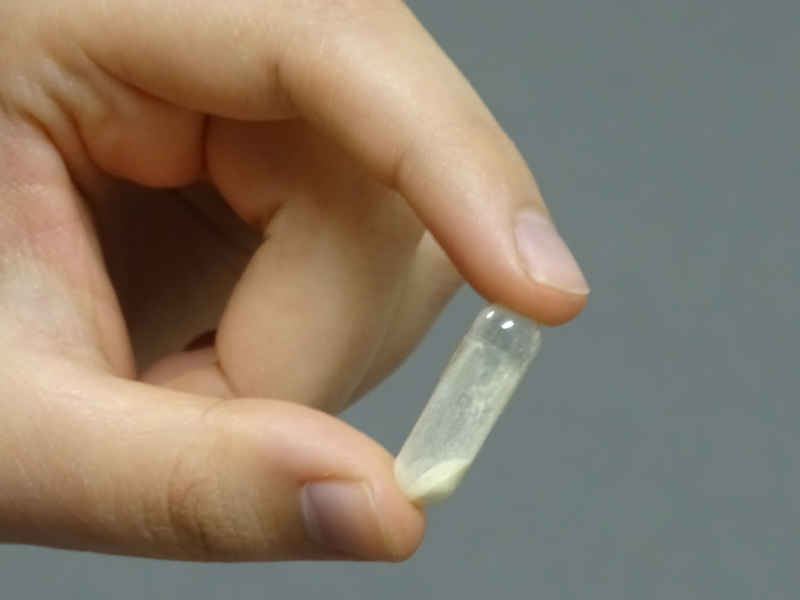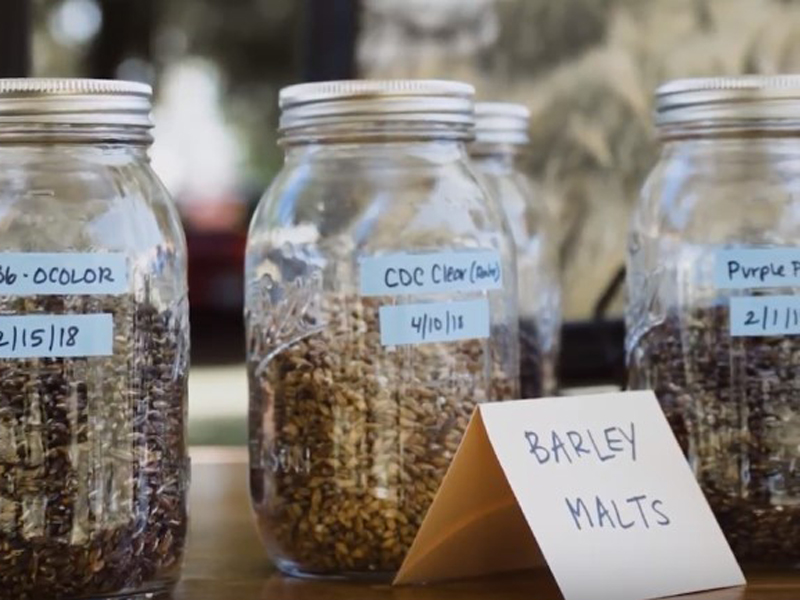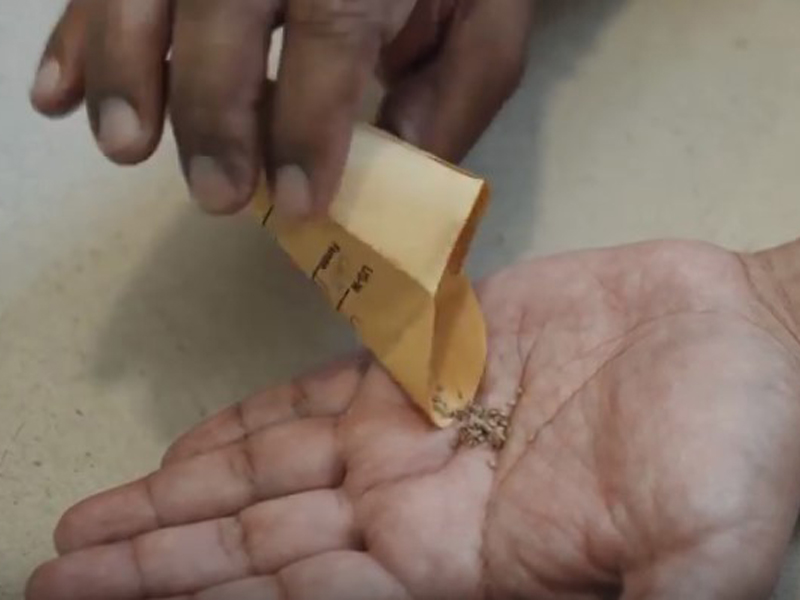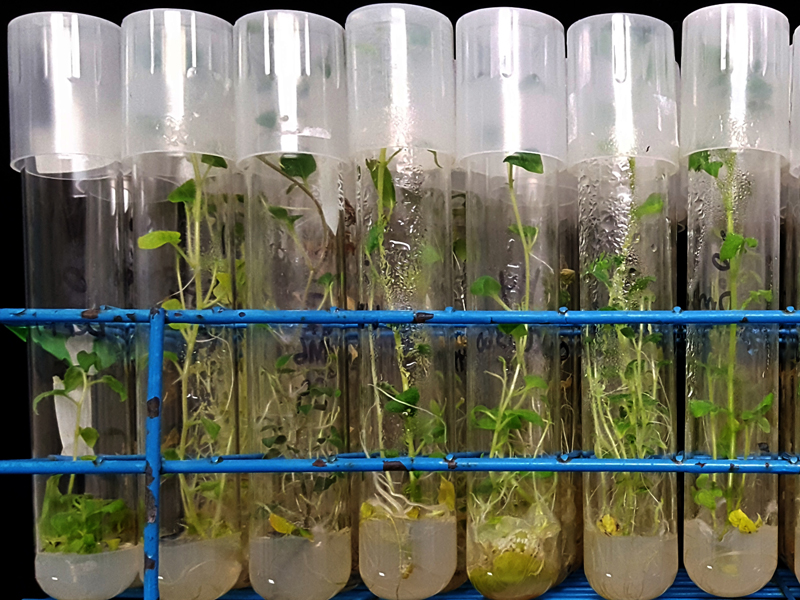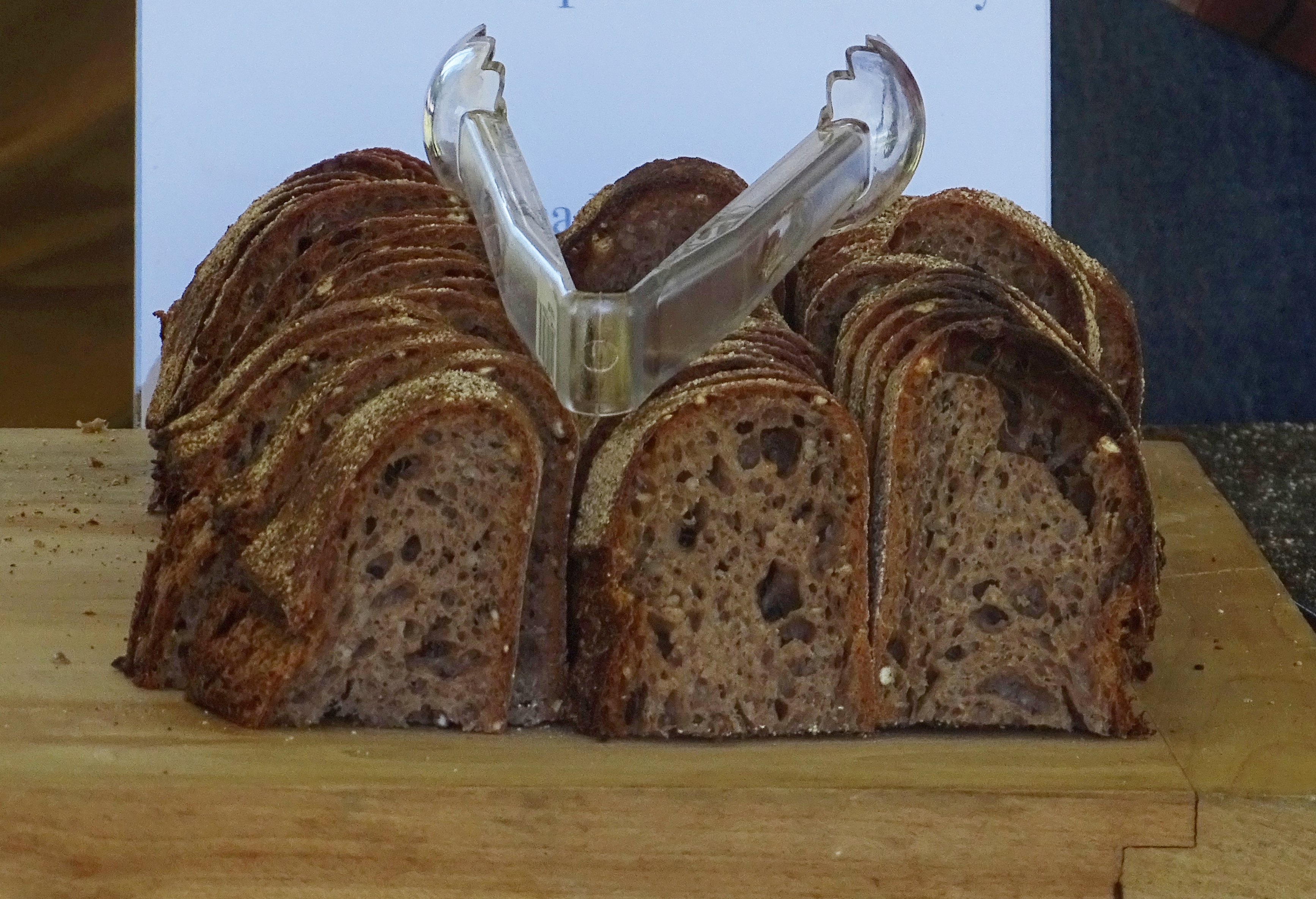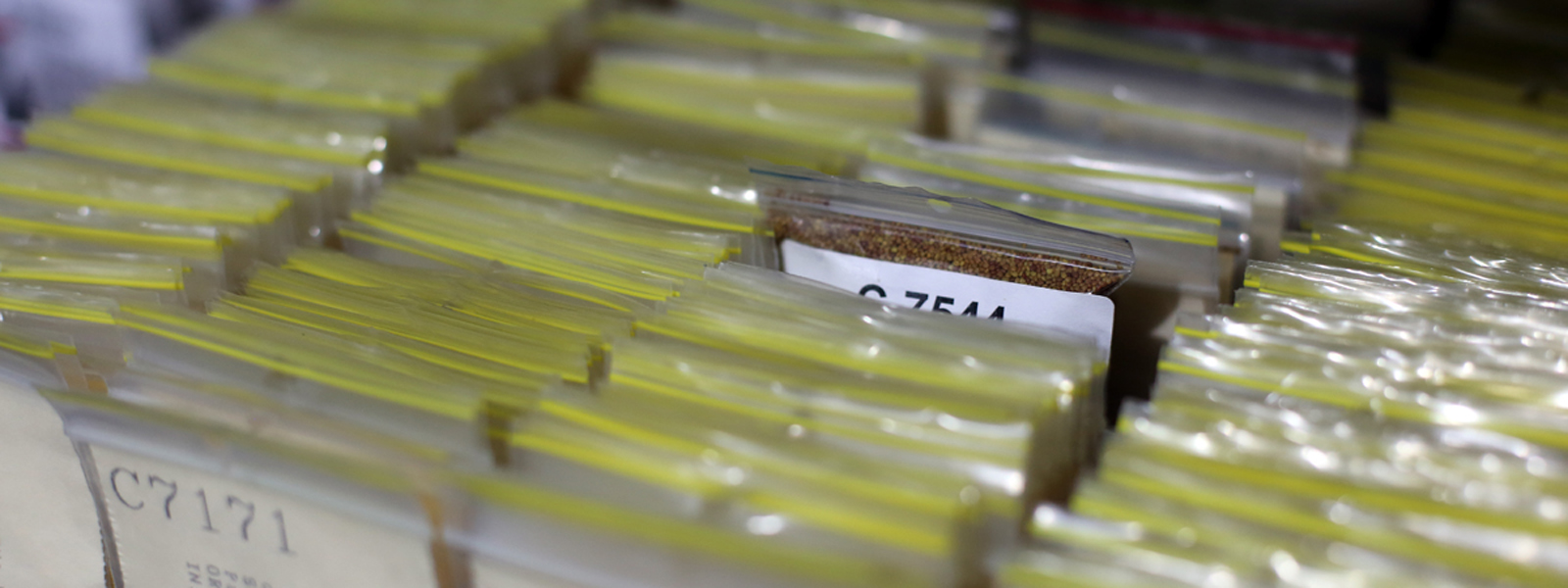
Crop conservation
What is crop conservation?
Seeds and plant tissue contain all kinds of genetic information in their cells. This genetic information is called germplasm. Storing this genetic information–all the traits and characteristics of a plant–for future use is important. Unique characteristics in a species may provide the key to solving future breeding challenges. Germplasm scientists research how crop genetic diversity can best be conserved and made available for plant breeding. They also work in seed banks to preserve the genetic diversity of the worlds’ crops. (Read more about seeds on the Seed Technology page.)
Plant genetic resources scientists
- Collect
- Safeguard
- Study
- Share
Plant breeders can then “mix and match” stored germplasm. (Read more in the Crop Breeding section.)
Germplasm is conserved in gene banks, botanic gardens, and other collections. Genetic resources are also taken care of by farmers in their fields, and in the case of crop wild relatives, conserved in their wild habitats. A few of the wild species are near extinction, so collecting and preserving them is crucial. Some species are extinct in the wild and exist only in genebanks. Both wild and domesticated plant resources are typically documented for their valuable characteristics and are made available so plant breeders and other scientists can use the diversity that they need.
How does crop conservation affect me?
Plant germplasm, also known as plant genetic resources, is a treasure trove of useful traits for plant breeders. Farmers since ancient times have collected germplasm in the form of seeds. Germplasm scientists are like museum curators, but for genetic resources. They keep the seeds and other plant materials alive and properly stored. They catalog information about what they receive:
- Passport data: Where do the plants come from? (Cotton's example, here.)
- Character data: What traits do the plants have? (Think you know sunflowers? More here.)
- Genetic data: What genetic information has already been collected from the plant? (Work with ancient grains here.)
These scientists make sure seeds and tissues are stored properly. They make these resources and information available to plant breeders and other scientists for research. All this is important because any future scientist can rely on the seed banks to provide germplasm to provide breakthroughs in disease resistance, heat tolerance, or a wide variety of other desirable attributes.
Current challenges in crop conservation
The enormous productivity of modern agriculture has come at the cost of the loss of a great diversity of crop seeds around the world. Farmers have replaced traditional crop varieties with higher-yielding cultivars. Additionally, consumers demand consistent products: sweeter corn, straighter green beans, and more wheat for less money. This has also decreased crop diversity.
Modern productive crop varieties are bred by wisely mixing and matching diverse genetic resources. Because less variety of crops is grown than in the past, some genetic diversity is slowly being lost. This reduces the options available to plant breeders working to produce more nutritious and resilient crops. The conservation of what remains of the world’s heritage of crop seeds is imperative for the future of agriculture.
Not all collections are of seeds. Many tropical fruits, for example, have seeds which die after only one or two years in the freezer. These plants are kept as cuttings in a growth chamber, as live plants in the field, or even in liquid nitrogen, which is very cold: −320°F. Once in the collections, these important resources must be maintained indefinitely. The loss of a unique plant could mean the loss of a vital plant characteristic.
What advances have we seen in crop conservation?
Modern gene banks were first established in the 1920s, and by the 1950s were established in numerous countries. Now countries all over the world maintain gene banks for crops of economic importance to them. More than a thousand national, regional, and international gene banks exist around the world.
The USDA National Plant Germplasm System is one of the largest collections in the world. It is a collaborative effort between public and private scientists and institutions.
Gene banks also have an important conservation role. More than a thousand national, regional, and international gene banks now exist around the world. Among the largest in terms of the diversity conserved and the quantities of seed distributed are the USDA gene bank and the international collections of CGIAR.
Mail order germplasm? Scientists can request germplasm from any gene bank. Most gene banks will fulfill the requests of scientists, regardless of where in the world the scientist is, subject to the conditions outlined in the Plant Treaty. The Svalbard Global Seed Vault, located in the Arctic, provides a safety backup for genebank collections. This backup is in case a catastrophic event such as a power failure at a gene bank causes harm to its collection.
Future opportunities in crop conservation
Providing affordable and nutritious food to an expanding population is a huge challenge. And scientists need to do that while conserving soil, water, and other natural resources. Crop scientists also need to maintain crop diversity and help plants adapt to challenging weather conditions. Using plant genetic resources to breed healthier, more productive, and more resilient crops is one of the best solutions. To do so, these invaluable resources must be adequately conserved and made accessible to the plant breeders around the world.
Crop wild relatives hold a lot of promising germplasm. These species have native genetics, never changed by humans. The fruits, grains, and roots of crop wild relatives are not as large as domesticated crops. Some might be bitter or have poor texture. But these hardy plants have a natural and useful diversity of traits that helped them live in some harsh conditions. And these traits are useful to breeders in the fight to create a sustainable and secure food supply. (Read more about crop wild relatives.) Scientists can retrieve the germplasm and do breeding experiments to make new cultivars. Changing consumer preferences and industry needs also require new traits. Continuing to preserve and characterize these collections will allow us to use these traits as the need arises.
Advances in genomics and other sciences are likely to deliver major advances in crop breeding, but these sciences depend on knowledge of plant genetic resources. Renewed investments in the safeguarding and exploration of these resources will provide a solid foundation for continued crop improvement into the future.
Fun facts about crop conservation
- There are well over half a million (500,000) different kinds of wheat varieties conserved in over 80 gene banks in the world (https://www.cwrdiversity.org/crop/wheat/). Many of these are heirloom varieties and wild related species, and represent bread wheat and pasta (durum) wheat types.
- Crop wild relatives increase the value of farming by up to $115 billion (USD) worldwide every year. They are important in breeding new varieties that are resistant to disease and resilient in changing climates, as well as higher yielding, more nutritious, and useful in industry. https://acsess.onlinelibrary.wiley.com/doi/10.2135/cropsci2011.08.0415

